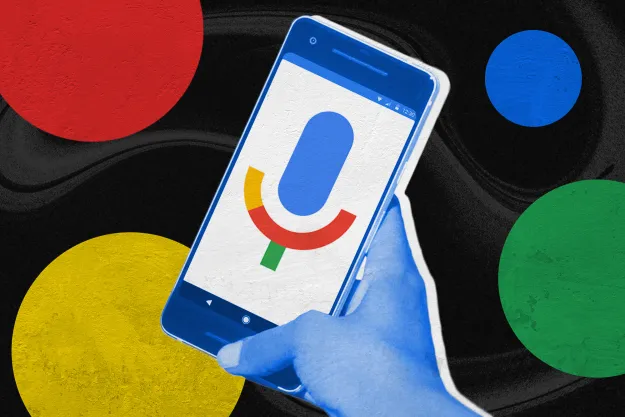
In 2011, Google paid $12.5 billion for Motorola Mobility. On Wednesday, it puzzled pundits by selling the same division to Lenovo for $2.91 billion. As we question why Google decided to take such a head-shaking loss on the company just months after acquiring it, the implications for the Android ecosystem are clear: In Google’s crumbling marriage to Samsung, selling Motorola was the equivalent of ditching the mistress in an attempt to patch things up.
As the largest Android manufacturer, Samsung has long been Google’s partner in furthering the OS and battling Apple. But recently, things have gotten tense in the household, and Google is scrambling to make things work before its prize partner walks out the door for good.
Signs of secession
Earlier this month, I looked at the new Galaxy Pro tablets at CES and noticed something troubling: Samsung was going to extreme lengths to hide Google’s Android operating system. Samsung has been trying to cover up Android with its own apps and services for years, but it had never been so bold as to mask it entirely, until “Magazine UX.” The rift between Samsung and Google had grown visible enough for everyone to see, and it seemed only a matter of time before the two split entirely. The once-happy relationship between Google and Samsung was headed for a nasty “who gets the house and kids” divorce.

Google was worried, too. According to Recode, Google executives were “dismayed” when they saw the Magazine UX on Samsung’s new Galaxy Pro tablets. They saw the writing on the wall. Because it gives away Android for free as an open-source OS, about a quarter of Android devices already ship without Google’s services with them, usually in less developed markets, like China. Samsung is Google’s biggest Android partner, by far. If it split off or pulled a Kindle Fire and cut Google services out of its Galaxy devices, the search giant would be left with an operating system it had absolutely no control over. Google had to win Samsung back; it had to court her, and make her feel special.
Recode reports that the two companies began meeting like crazy, “hammering out a series of broad agreements that would bring Samsung’s view of Android in line with Google’s own,” and according to one of the site’s sources these talks resulted in “a huge change, a sea change in the last few weeks.”
Rumor has it that Samsung has agreed to promote Google Play services more prominently in future devices instead of its own, likely dump the new Magazine UX, and dump some of its own apps. Essentially, Samsung is going to start showing that it relies on Google’s operating system for its mobile devices, and the two companies get along just fine. It’s decided to give up part of its Appley dream to be an all-in-one hardware/software manufacturer to make Google happy.
Being in a committed relationship means that both sides must compromise. But Google’s concessions seem a lot larger than Samsung’s.
Here’s what Google’s doing to make Samsung happy:
- Google and Samsung signed a 10-year patent-sharing deal.
- Google sold the Motorola brand to Lenovo for $3 billion.
- Google may stop making Nexus devices.
We’ve asked Google whether Samsung had anything to do with the Motorola sale and if it will continue to make Nexus device, but have not heard back. Here’s what we do know: Samsung wasn’t happy about Google buying Motorola. Publicly, it has toed the Android line, but behind the scenes, it has been working on backup operating systems like Tizen, hasn’t stopped making Windows Phones, and is heavily investing in its own Boxee-like TV platform ahead of Google’s Android TV. This past fall, it even held a large developer event, pushing the developer community to develop exclusive, unique content for Samsung devices. It hasn’t just been nervous about relying on Google; it’s been plotting its exit.
But Google needs Samsung. In fact, as Google’s Motorola acquisition finally gained approval in May 2012, Chairman Eric Schmidt made a personal trip to South Korea with the express intent of making Samsung feel better.
“I told them that the [Android] ecosystem has to be favored at all costs,” said Schmidt in a piece reported by the WSJ (via ZDNet). “The Motorola products can’t be unduly favored, unless you’re also unduly favoring Samsung. If it looks unfair, and then the ecosystem unravels, then it’s a terrible mistake.”
Samsung is getting too big and too successful to be just another Google partner.
So, things are all better now, right?
We’ll find out when we see what kind of apps and interface Samsung puts on its upcoming Galaxy S5 phones, but scaling back its hardware efforts by selling Motorola and sharing its patent portfolio may have talked Samsung out of leaving Google’s Android house, for now. Samsung has been hosed by lawsuits from companies like Apple, asserting that it has stolen patented ideas and phone technologies. Access to Google’s treasure chest of Motorola patents may help it defend itself against future attacks.
Google may have made good today, but it probably can’t hold on to Samsung forever. Much like Google itself, Samsung is becoming too successful to reign in. It’s beginning to dominate almost every area of consumer electronics, and its revenue was within billions of matching Apple in the last quarter of 2014 ($55 billion to Apple’s $58 billion). But until it controls all the hardware and software on its devices, Samsung may never reach the depth of success that Apple has with its products. Money from app sales, music sales, and other services would easily put it over the edge and open up a new level of growth, but right now Google’s core Android services stand in its way. Google also controls the entire direction of Android, meaning Samsung cannot move forward with any large initiative without consulting or waiting for Google first.
Samsung may appear with Google in public, wave its hand at the crowds, and act like it cares for and supports Google, but unlike love, business is business. Google has stalled its departure, but Samsung is getting too big and too successful to be just another Google partner for long. If Google doesn’t find a new way to make Android work on a broader scale, eventually Samsung is going to find a new place to live.
Updated on 2-01-2014 by Jeff: Fixed a few typos.
Editors' Recommendations
- This Samsung tablet with S Pen stylus just had its price slashed to $199
- 5 phones you should buy instead of the Google Pixel 8
- Samsung’s newest Android tablet is a perfect iPad alternative
- 5 phones you should buy instead of the Samsung Galaxy S24
- How to use Circle to Search on your Android phone


